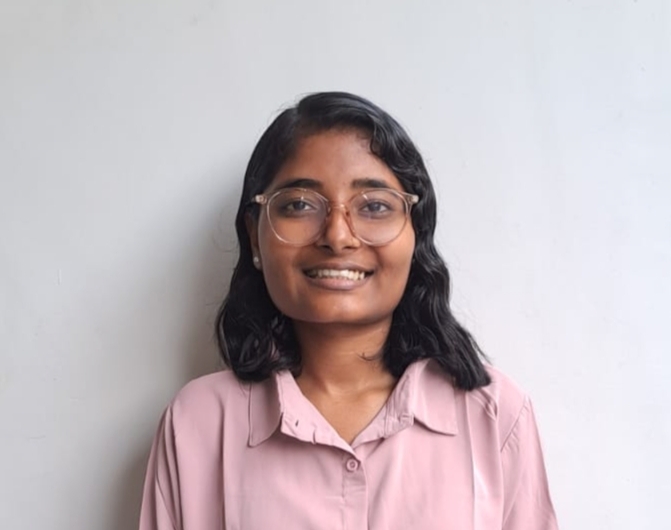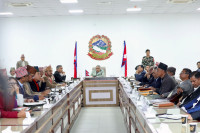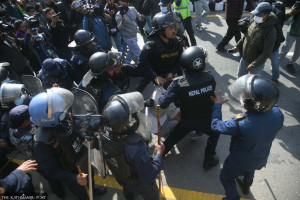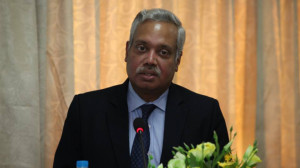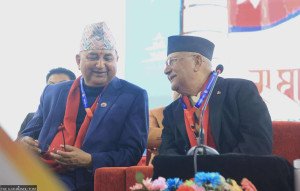National
Police accused of ignoring rape cases involving adult women in relationships
Reliance on physical evidence leaves adult survivors vulnerable when injuries are not visible.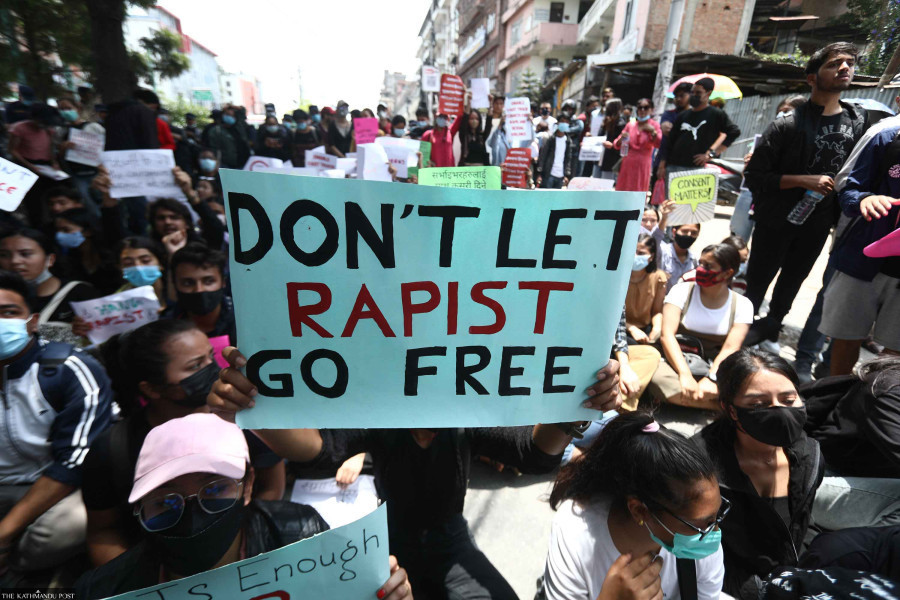
Ellie Davis & Aarati Ray
It was April 7, 2019, just three days after an emergency surgery at Tribhuvan University Teaching Hospital in Maharajgunj for an ectopic pregnancy that nearly cost Binu Yadav her life. Ectopic pregnancy occurs when a fertilised egg implants itself outside of the womb, usually in one of the fallopian tubes.
That day, her then-partner, Pradeep Kathayat, raped her while she was bedridden, recovering from her surgery. What began as a consensual relationship in 2018, turned into rape when Kathayat forced sexual contact on Yadav, she said.
“After surgery, I was in pain, almost unconscious, and even breathing was difficult,” Yadav said. “Yet he forced himself on me.”
The assault tore open fresh stitches from surgery. Later, Yadav went to the Women, Children and Senior Citizen Service Centre in Kalimati for help. But police showed no urgency. It took four days before they listened to her story seriously and filed the first information report, registering the crime, Yadav said.
Both times she sought help after being sexually abused, first by Kathayat, then by his uncle, she faced apathy from law enforcement. In her words, they dismissed the importance of consent, undermined her survivor testimony, and protected powerful perpetrators.
“I had nine stitches in my lower abdomen. It was infected… If they hadn’t seen it, they wouldn’t have believed me,” she said. “Even police seemed to think that in intimate relationships, sex is always consensual—proving otherwise is nearly impossible.”
Yadav’s case mirrors what some victims and their advocates describe as a troubling flaw in Nepal’s policing of sexual violence—hardwired reluctance to recognise that rape can happen within intimate relationships, and a harder path to justice for women who experience this form of rape.
For any rape survivor, the path to justice begins with a visit to the police to file a first information report (FIR). According to Prosecution Officer and Assistant District Attorney Gayatri Wagle, police registered 2,454 FIRs for rape last fiscal year, 2024-25.
The process begins by listening to the victim, adds Police Superintendent Basundhara Khadka. “We evaluate the woman, her body language and her condition,” she said.
Victims, Yadav says, are subjected to judgmental questioning and accusations like, “You both enjoyed and did everything willingly, and now you call it rape?” “Why were you in a relationship with him?” “Why did you talk to him or wear certain clothes?” and, “You want to extort money from him?”
A spokesperson of Lalitpur Police Station, who spoke under the condition of anonymity, said relevant police officers have been trained on how to speak with the victims.
Despite this training, according to Sharada Puri, who has counselled victims of sexual assault for years, many police investigators still lack proper training, sensitivity, and a trauma-informed approach. Survivors often face judgmental questions and moral scrutiny, which deepen their trauma and silence them.
Moreover, victims who know their perpetrators often face social and institutional judgment, adds Sapna Shrestha, a programme coordinator at Saathi Nepal, an organisation that supports victims of gender-based violence. “If the perpetrator is a close partner or a colleague, it’s treated as if the victim is imposing the case.”
After filing her case, Yadav got none of the protection she had hoped for. She alleges that Kathayat’s maternal uncle, Suraj Karki, then an inspector in the Criminal Investigation Department, tried to bribe her to drop the case.
When she refused, he allegedly came to her home, brandishing a pistol, and threatened to jail her brother, and suggested that Yadav marry her accused rapist.
Later, Yadav and her mother were allegedly forced into a vehicle and taken to Kalimati Women’s Cell. There, she was made to sign a blank paper that was later filled in to falsely state, “As he did not agree to marry me, I impulsively filed this rape case.”
If a victim reports the rape immediately, they can be taken to a one-stop crisis management centre at a hospital for a medical examination. The resulting report is a crucial piece of evidence. The police then embark on a 19-20 day investigation, which includes questioning the suspect and visiting the assault location.
Khadka and other law enforcement officials emphasise a heavy reliance on physical evidence. “Her statement should be in line with the evidence,” Khadka said, adding that “if there is not enough evidence, it will be very difficult for us.”
This approach often disadvantages adult survivors, experts say, especially those in intimate relationships where physical violence may not be apparent.
Counsellor Puri sees the overreliance on physical evidence as a major flaw. Puri has repeatedly seen female victims struggle for justice when their cases lack visible injuries. “Courts and investigators still expect forensic proof, even though modern understanding of sexual violence recognises that the absence of physical evidence does not mean there was no rape,” she said.
Wagle says that although the District Attorney’s Office chooses to prosecute 99 percent of registered rape cases, pursuing prosecution does not always guarantee conviction.
For example, of the 2,479 rape cases for which courts issued verdicts last fiscal year, 55 percent resulted in convictions.
Like nearly half of the cases last year, Yadav’s case against Pawan Kathayat (her former partner’s uncle) did not result in a conviction.
After being forced to withdraw her case against Kathayat, she was coerced into marrying him. Yadav says she was confined to her in-laws’ home in Manthali, denied food, beaten, and repeatedly molested by Pawan.
During the Covid pandemic in 2020, Kathayat filed for divorce, revealing, “I married you only to bypass the statute of limitations for the rape case. How could we ever accept you?”
On the day of the final hearing of divorce proceedings, Pawan tried to rape her. “Now you will no longer be with Pradeep,” she recalls him saying. “If you make me happy, I’ll speak to him, and we’ll let you stay.”
Yadav managed to escape, but later attempted suicide by drinking poison at Ramechhap District Court. She survived after 22 days in hospital. “I realised that if God kept me alive, I had to keep fighting,” she says.
Yadav then filed an attempted rape case against Pawan Kathayat.
Recalling her visit to the police, Yadav says, “The inspector threw my complaint back in my face and insulted me, saying, ‘Why did you come only after one and a half months? If the abuse happened, you should have reported it immediately.”
He ignored her hospitalisation following a suicide attempt and dismissed the complaint her lawyer had drafted. It was only after the issue came into the media that the case was filed. But Pawan was released after 58 days and eventually acquitted, a decision she believes was influenced by his power.
Even after his release on a bail of Rs200,000, she was never informed or summoned for the hearings by the District Attorney’s Office.
In cases like Yadav’s, when the victim waits to report the rape, police have a harder time conducting their investigation, says Police Superintendent Khadka “As the days pass, the evidence is lost. We see many of these cases — some come very late, a year later. In these cases, it is hard to establish the crime.”
In practice, adult cases are also less likely to result in a conviction compared to cases where the victim is a minor. “The success rate of cases regarding adult victims is low in comparison to those involving minors,” says Wagle.
For police, rape cases involving minors are relatively straightforward. “If it’s a minor, then consent doesn’t matter; it is rape,” Khadka said.
The investigation process for adult rape cases, though, is more complicated. “There are so many varieties of rape cases,” the Lalitpur District Police spokesperson said. “For those under 18 there, is no compromise. In adult rape cases, there might be some other issues.”
Adult cases become difficult to prosecute when there’s less physical evidence. “When there is little physical evidence, we rely on the survivor’s statement, but if it isn’t supported by circumstantial evidence, conviction is unlikely,” adds Wagle.
According to Shrestha, the perception that all rapes are violent is a misconception.
Most of the victims Shrestha has worked with knew their perpetrators, and not all assaults are physically violent. “Police picture rape as very violent — happening at night, with multiple attackers,” she said.
In reality, many victims do not fight back. “People assume adults will scream or resist, but trauma can trigger a ‘flight, fight, or freeze’ response; officers often fail to understand this,” Shrestha explained.
Counsellor Puri believes that even adult cases without clear physical evidence should get thorough attention. “Psychosocial assessments, survivor testimony, and behavioural evidence should carry more weight, yet they are often underused or undervalued in the Nepali legal system,” she adds.
While systemic failures persist, some female victims report positive experiences with police. One such case involves Gita (a pseudonym), who was attacked and raped at night by a man she recognised but didn’t know personally. Seven months later, upon discovering her pregnancy, she reported the crime.
Gita says she felt comfortable going to the police, partly because a family member worked as an officer. “The police trusted me completely,” she said. The perpetrator was arrested the same night.
Sangita Budhathoki, a gender and project implementation specialist who has worked for more than a decade in gender empowerment, says police practices are shaped by social bias.
“But Nepal Police is working to reduce harmful behaviour. We recently developed a curriculum and held master training for senior officers on gender-responsive investigation and communication skills,” she said.
According to Yadav, when her case got media attention, many other survivors reached out to her, sharing a common pain—of voices ignored by law enforcement and the judiciary because the perpetrators were powerful. “Honest investigations are rare, and in adult rape cases, even getting the complaint registered is a struggle,” she said.
Khadka emphasised that Nepal Police are working to make women more comfortable reporting gender-based violence, including by increasing the number of female officers. “The growing presence of women in the police is symbolic of our support for women,” she said.
Yadav says victims’ first contact with the police is of utmost importance. “Police fail to grasp how a single insensitive remark can harm a victim’s mental state,” Yadav said. “Their insensitive behaviour drives many survivors to abandon the pursuit of justice. Officers need proper training to treat victims with dignity, not dismiss them as liars.”




 18.12°C Kathmandu
18.12°C Kathmandu
